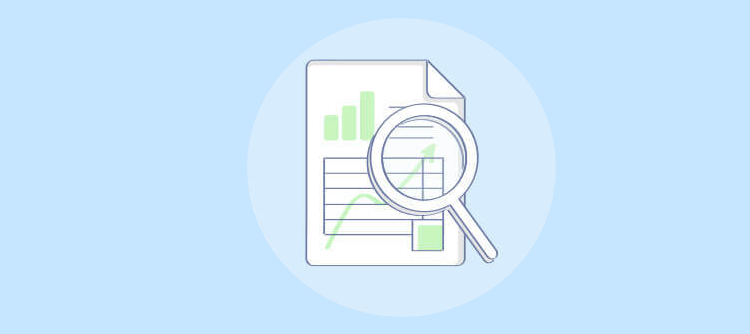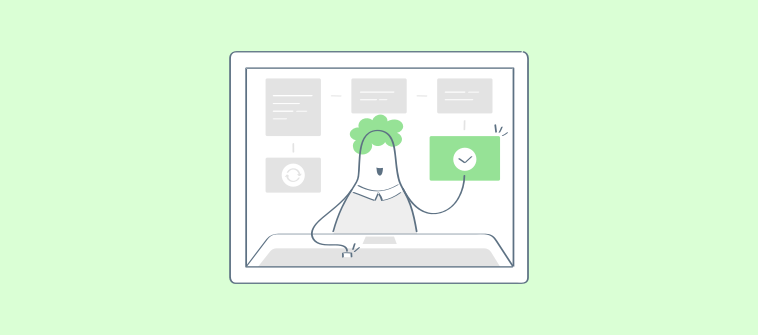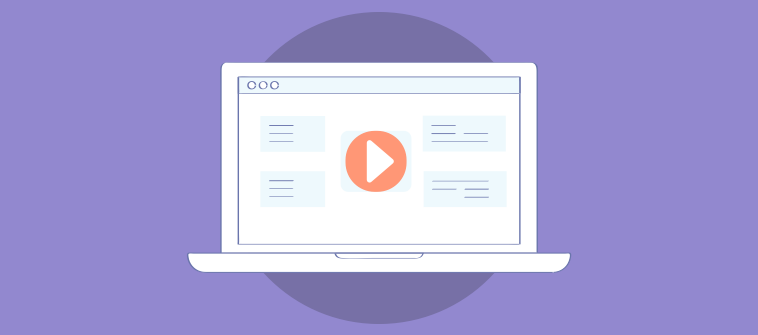
What is the ultimate goal of any business?
To sell, earn revenue, and build lasting relationships with customers.
All of this is directly dependent on those on your front line, i.e., your sales soldiers. They fight and fall multiple times to drive customers to the point where they happily want to do business with you. That keeps the revenue rolling and shareholders happy!
But what if your sales team weakens?
It will break the connecting thread between you and your prospects, drift them away, and drastically impact your bottom line.
To prevent this from happening, consider creating a foolproof sales enablement strategy and deploying the right sales enablement software.
A winning strategy powers your sales personnel with the resources, tools, and knowledge they need to stay strong and sell smart.
Excited to learn about sales enablement and unlock the formula to create a compelling sales enablement strategy?
Let’s dive in.
What Is Sales Enablement?
Sales enablement is a business function that aims to equip your sales staff with the knowledge, tools, and training they need to sell better and close deals faster. It helps them engage effectively with prospects throughout the sales process and deliver meaningful experiences that are well-aligned with their buying journey.
With quick access to sales collateral like customer case studies and product documentation, your sales team can make impactful pitches and convert faster.
Why Is a Sales Enablement Strategy Imperative for Your Business?
If poor sales are giving you sleepless nights, a thoughtful sales enablement strategy can offer a quick fix. It is the magic bullet that has the power to turn even the most underperforming sales team into a powerhouse of excellence.
Here are some of the major benefits that a sales enablement strategy brings to the table:
1. Equip Sales Team With the Right Resources at the Right Time
A carefully-crafted sales enablement strategy arms each member of the sales team with the knowledge and insights they need to pitch confidently and win customers. With quick access to critical information, customer behavior, problems, and challenges, your sales squad can steer customer interactions towards meaningful results and close deals faster.
Reps have a readily accessible single source of truth comprising essential product and customer information that guides all their interactions and decisions.
2. Eliminate Guesswork & Personalize Conversations
Sales agents need different types of sales enablement content to address prospect needs at different points in the sales journey. For instance, educational blogs and infographics work great for prospects at the top of the funnel, and for those at the bottom, testimonials, customer case studies, and reviews are perfect.
A sales enablement strategy ensures zero guesswork and maximum clarity in the process. It arms agents with actionable data and insights, so they can personalize conversations across all touchpoints and build a strong bond with customers.
3. Align Sales, Marketing, and Product Teams
Collaboration is crucial between sales, marketing, and product teams for the successful closure of deals. A sales enablement strategy ensures that there is a bridge connecting all three departments for smooth alignment.
Working together with the marketing team gives your sales staff access to sales collateral that helps them make successful pitches. Similarly, coordinating with the product development team provides reps with key insights into a product’s features and USPs. Such a well-aligned work system streamlines cross-functional communication and improves the sales process.
4. Increase Sales
With a dedicated strategy in place, your sales figure is bound to flourish. By removing bottlenecks and empowering reps with all the resources they need, the right strategy improves process efficiency and increases sales. It also introduces reps to sales enablement tools and best practices that further amplify their efforts and help them get more conversions. Additionally, with continuous training, your sales team can always be on top of their game.
10 Best Practices for Creating a Winning Sales Enablement Strategy
Now that we have uncovered the benefits of a high-performance sales enablement strategy, it’s time to take note of some best practices that will help you build an excellent strategy for your business.
While creating such a strategy is not easy, having these sales enablement tips up your sleeves will certainly help.
1. Set Your Goals Right
The first step lays down a strong structure on which depends the success of the entire sales enablement process.
Having specific goals give you a good starting point and a defined path to walk on. To set the right goals, you should be familiar with the pain points of your sales staff, the challenges they face, and the questions prospects frequently ask.
Here are a few examples of sales enablement goals:
- Increase the active selling time of the reps
- Keep salespersons updated with the latest industry trends
- Reduce administrative work such as researching leads, data entry, and writing emails to a bare minimum so that reps can focus on their core work i.e. selling
Like these, you can have several other goals that will help you kickstart the process on the right foot. Defining crystal clear sales enablement objectives will prevent the chances of going off-track and will help you stay focused.
2. Create a Sales Enablement Plan
A thoughtfully designed sales enablement plan is vital for building a strategy that actually works. The plan should document your vision, stakeholders involved, potential roadblocks along with the steps to overcome them, and the outcomes you wish to achieve.
To build a comprehensive plan that covers all essential elements of sales enablement, start by identifying gaps existing in the current sales process. Talk to your sales team about the challenges they face, the training they need, and their experience so far with prospects.
It is simple to say, “this is how we are going to do it”. But documenting all the specifics of sales enablement and showing your full support to reps is where the hard work begins.
Think of your plan as a roadmap that carefully addresses every challenge in a step-by-step manner. It will not only bring transparency to the process but will also increase accountability regarding what needs to be done and how.
3. Prioritize Sales Staff Training
As the market changes and the industry evolves, upskilling and reskilling are necessary.
Learning and development should be given due importance while devising sales enablement strategies. This is crucial to instill new skills in reps and hone the existing ones so that they can put their best foot forward in every interaction.
Training programs should cater to the specific needs of new as well as seasoned salespersons. This can be done by regularly tracking their performance, understanding the challenges they face, and identifying their strengths and weaknesses.
Leverage this information to provide power-packed training sessions on stakeholder and client management, project and time management, critical thinking, and problem-solving. In addition, the training should educate your sales staff on the importance of sales enablement tools and how to use them effectively.
Regular industry training and individual coaching go a long way in building a team of super-efficient sales professionals.
Read More: Turn Employee Training Effortless With Training Documentation
4. Adopt a Knowledge-Centered Approach
Knowledge is central to the success of a sales enablement strategy.
As a concept, sales enablement is all about equipping sales professionals with all the assistance and training they need to sell more and sell fast. Knowledge has a key role to play in this process.
Embracing a knowledge-centered approach ensures that critical information pertaining to your products, services, customer challenges, and historical data is easily accessible. This can be achieved by creating a centralized knowledge platform comprising all essential information that your sales team can access on the go whenever they need. Right from product updates, competitor research to sales call scripts and prospect details, this platform covers all the data that reps might need to conduct conversations.
This video shows how you can create an online knowledge base for your sales team.
5. Keep Customers at the Heart of Your Strategy
While devising a sales enablement strategy, it’s natural for you to sideline customers and focus solely on the salespersons. This can be a grave mistake.
Who are you trying to win over at the end of the day?
It goes without saying – your customers!
If your customers aren’t satisfied, all your efforts to create a sales enablement strategy and keep your sales team in high spirits will be futile.
To avoid this, try to understand customers’ buying journey, behavior, and experiences while interacting with your business.
Accordingly, create a strategy that equips your team with the different types of sales enablement content and the necessary sales collateral. With valuable information up their sleeves, reps will be able to target prospects with the right messaging at each stage and get more conversions.
6. Equip Your Sales Staff With the Right Tools
No matter how hard you work on your sales enablement strategy, it is difficult to achieve the desired results without adopting the right technology.
The sales enablement process needs the support of the right tools to be successful. These tools can streamline the entire process by automating manual work, centralizing all sales-related information, and minimizing friction in the day-to-day tasks.
Let’s look at three such sales enablement software that you must adopt:
1.Knowledge Base Software
It is a cloud-based tool that helps you build a centralized knowledge hub comprising all essential information about your products, services, customers, sales scripts, and much more. With 24×7 access, this tool serves up the most relevant and up-to-date information to reps, making the selling process a lot easier.
Like these, you can have several other goals that will help you kickstart the process on the right foot. Defining crystal clear sales enablement objectives will prevent the chances of going off-track and will help you stay focused.
2. Live Chat Software
Live chat tool helps sales persons trace the path visitors take on your website and engage them proactively. The tool allows reps to anticipate customer questions, transfer chats to the right department, and provide quick answers to visitors’ questions.
3. Help Desk Software
Help desk tool automates the process of ticket management, thus preventing all the constant back and forth over emails and calls. All sales-related tickets are brought to a shared inbox where sales reps can instantly assign, track, and resolve them collaboratively. The tool also helps in sending automated feedback emails once an issue is addressed.
7. Create a Sales Enablement Plan
A thoughtfully designed sales enablement plan is vital for building a strategy that actually works. The plan should document your vision, stakeholders involved, potential roadblocks along with the steps to overcome them, and the outcomes you wish to achieve.
To build a comprehensive plan that covers all essential elements of sales enablement, start by identifying gaps existing in the current sales process. Talk to your sales team about the challenges they face, the training they need, and their experience so far with prospects.
It is simple to say, “this is how we are going to do it”. But documenting all the specifics of sales enablement and showing your full support to reps is where the hard work begins.
Think of your plan as a roadmap that carefully addresses every challenge in a step-by-step manner. It will not only bring transparency to the process but will also increase accountability regarding what needs to be done and how.
8. Prioritize Sales Staff Training
As the market changes and the industry evolves, upskilling and reskilling are necessary.
Learning and development should be given due importance while devising sales enablement strategies. This is crucial to instill new skills in reps and hone the existing ones so that they can put their best foot forward in every interaction.
Training programs should cater to the specific needs of new as well as seasoned salespersons. This can be done by regularly tracking their performance, understanding the challenges they face, and identifying their strengths and weaknesses.
Leverage this information to provide power-packed training sessions on stakeholder and client management, project and time management, critical thinking, and problem-solving. In addition, the training should educate your sales staff on the importance of sales enablement tools and how to use them effectively.
Regular industry training and individual coaching go a long way in building a team of super-efficient sales professionals.
9. Adopt a Knowledge-Centered Approach
As the market evolves and customer needs change, so should your sales enablement content.
Using outdated content that’s no more relevant is a surefire way for conversations to go wrong. People approach your sales staff thinking that they are experts in the subject and will have the best advice to offer. When reps fail to provide accurate information, it makes prospects question your brand’s credibility in the market.
On one hand you lose a potential customer, and on the other, your brand’s popularity increases for all the wrong reasons.
Whether it’s blog posts, videos, knowledge base, or product documentation – your sales enablement content should be regularly updated.
Build a dedicated team who can rigorously review all the content and map it with the industry changes and product developments. Consult with your product, sales, and marketing team to identify the changing customer requirements and make sure these changes reflect in all the content that goes live.
10. Measure Your Strategy’s Success
Monitoring the performance of your sales enablement content strategy paves the way for regular improvements and maximum efficiency.
There are several ways to measure the impact of your sales enablement programs.
Start by tracking how well your sales team has adopted the sales tools and processes. Run a survey to see which tools are your team most comfortable using and how they have impacted your sales.
You should also analyze what content is working for your sales staff in making pitches and winning deals. At the same time, it’s also essential to identify parts of your sales documentation that have turned obsolete.
Modern documentation tools come with built-in analytics to help you track the effectiveness of your sales content. By measuring KPIs like failed searches, poor-performing articles, upvotes, and downvotes, you can identify what content needs to be improved, modified, or updated.
This video demonstrates how to do that.
High-Value Sales Enablement Content
The success of your sales enablement strategy depends largely on the content reps use to pitch products and close deals. Access to valuable content helps your sales team engage meaningfully with prospects at every touchpoint and carry out contextual conversations.
If you are wondering what kind of sales enablement content to provide your team with, here are some ideas to get inspired:
1. Blogs
Informative blog posts can be used by reps to nurture and convert leads. These are best for prospects that are reaching the bottom of the sales funnel.
2. Sales Scripts
Sales scripts provide consistent support to the sales team, especially when they are engaging with prospects entering the bottom of the funnel. Writing sales scripts and making them easily accessible helps agents keep the nervousness away while interacting with prospects.
3. Customer Case Studies
Case studies help sales staff showcase how your products and services have successfully solved customers’ problems. This is a good way to convince prospects to go ahead with the purchase.
4. Competitor Analysis
Knowing what your competitors are up to is critical to make comparisons and showcase your brand as a better option to potential customers.
5. Ebooks
These are comprehensive information resources containing research-backed content that can prove extremely useful while making sales pitches.
All this information can be recorded in a centralized sales documentation that your sales team can access 24×7 from their mobile phones or any other device.
Best Sales Enablement Tools For 2024
If reps have the support of strong tools and the right content, nothing can stop them from winning prospects and turning them into brand loyalists. While we already discussed the content above, it’s time to take a look at some sales enablement tools examples you can adopt:
1. ProProfs
If you are looking for an all-in-one solution to empower your sales staff and fulfill your sales dreams, ProProfs can be a great bet. It offers tools across knowledge management, live chat, and help desk to make the entire sales process a smooth sail.
Opt for ProProfs knowledge base if creating great sales enablement content is your focus. ProProfs Live Chat and Help Desk are best to help agents initiate conversations with prospects, manage and resolve tickets, and serve customers long after the purchase is complete.
2. BIGContacts
BIGContacts is a simple CRM software that your sales team can use to organize leads, manage emails, and track all customer interactions. It offers a centralized space to monitor sales data, email campaigns, customer contacts, and much more that helps reps stay on top of their work. They can even set automated tasks and reminders, see last conversations, and plan their next moves accordingly.
3. Salesforce
Salesforce is a popular CRM platform that is scalable, flexible, and, most importantly, easy to use. It brings all your teams – marketing, IT, sales, and customer service, under one roof so they can work collectively to deliver top-notch experiences to customers. As a collaborative platform, this tool not only helps your sales staff manage conversations but it is also a big asset for your support reps, who can use it to resolve customer issues across channels.
4. Highspot
Highspot is yet another sales enablement tool diligently designed to turn your sales vision into reality. With a powerful combination of content management, customer engagement, contextual guidance, and analytics, Highspot is a stunning software that makes sales enablement easy and effective.
It helps you deliver guided experiences to your reps so they have the exact content they need at their fingertips. Highspot offers a unified solution for executing sales strategies and optimizing the performance of your customer-facing teams.
5. Seismic
The sales enablement solution provided by Seismic is great for crafting personalized experiences for customers regardless of the stage they are in. The tool is not just a central access point to get sales content. It’s much more than that. Seismic offers contextual recommendations to reduce the time reps spend searching for the right content. You can use its simple playbook to train agents and keep them on top of their work.
Supercharge Your Sales Staff With a Smart Strategy
A thoughtfully-created sales enablement strategy is essential for the hassle-free execution of your sales process. It acts as a guiding force for your salespersons, pushing them to conquer challenges, sell confidently, and brew beautiful bonds with customers.
While building a sales enablement strategy, it’s crucial to have clarity around your goals. It’s also vital to create a powerful plan, foster cross-team collaboration, and never lose sight of your customers in the process.
The above-mentioned sales enablement tactics, along with the right tools, will definitely set your sales team for success!
Do you want a free Knowledge Base?
We have the #1 Online Knowledge Base Software for instant self-help








